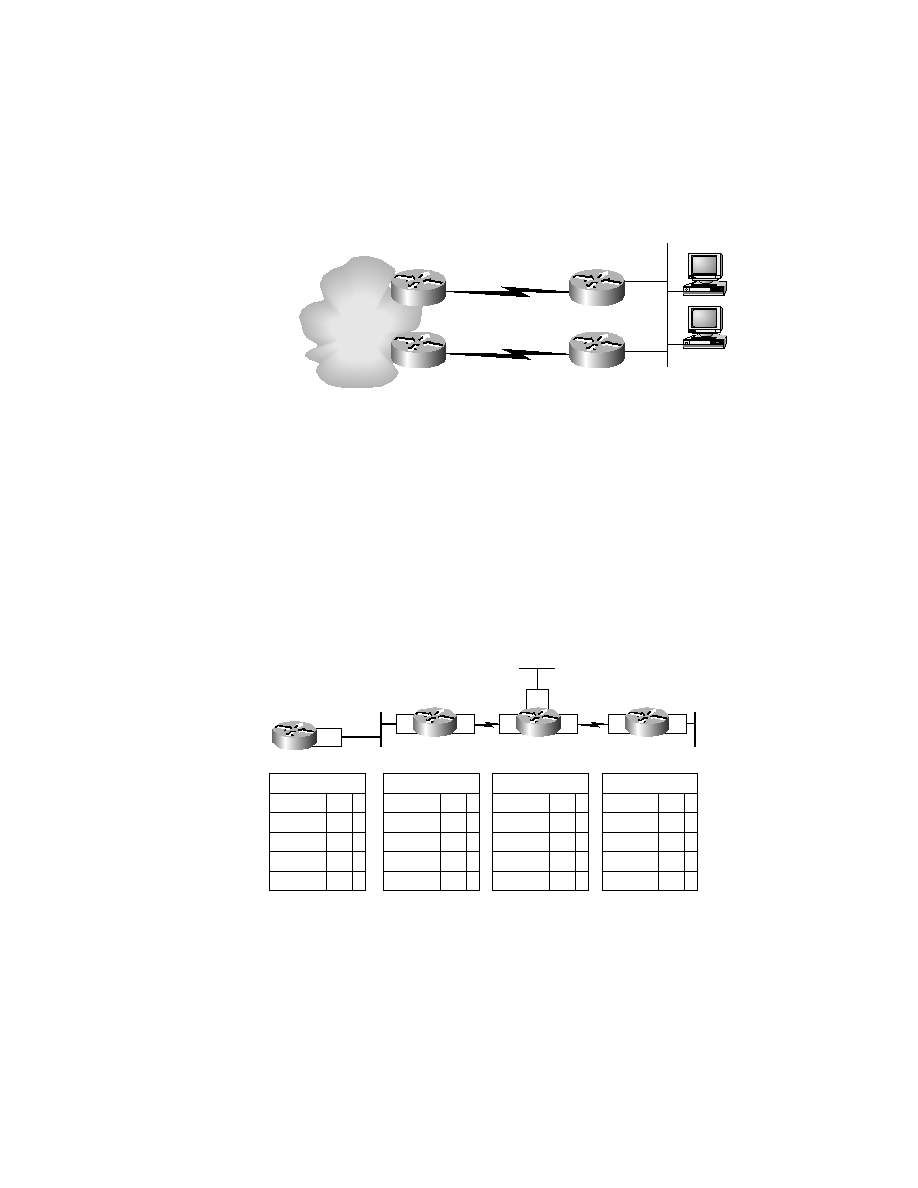
276
Chapter 5
IP Routing
F I G U R E 5 . 3
Pinhole congestion
Since network 172.16.30.0 is a T1 link with a bandwidth of 1.544Mbps,
and network 172.16.20.0 is a 56K link, you would want the router to choose
the T1 over the 56K link. However, since hop count is the only metric used
with RIP routing, they would both be seen as equal-cost links. This is called
pinhole congestion.
It is important to understand what a distance-vector routing protocol
does when it starts up. In Figure 5.4, the four routers start off with only their
directly connected networks in the routing table. After a distance-vector
routing protocol is started on each router, the routing tables are updated
with all route information gathered from neighbor routers.
F I G U R E 5 . 4
The internetwork with distance-vector routing
As shown in Figure 5.4, each router has only the directly connected net-
works in each routing table. Each router sends its complete routing table out
SO
SO
SO
SO
Network
172.16.10.0
Router B
Router A
Network
172.16.30.0
T1
56K
Network
172.16.20.0
Router D
Router C
172.16.10.0
172.16.20.0
172.16.40.0
172.16.50.0
172.16.30.0
S0
E0
2501A
F0/0
2621A
S1
S0
E0
2501B
E0
S0
2501C
Routing Table
F0/0 0
172.16.10.0
Routing Table
E0
0
172.16.10.0
S0
0
172.16.20.0
Routing Table
S0
0
172.16.20.0
Routing Table
S0
0
172.16.40.0
E0
0
172.16.30.0
S1
0
172.16.40.0
E0
0
172.16.50.0
Copyright ©2002 SYBEX, Inc., Alameda, CA
www.sybex.com
